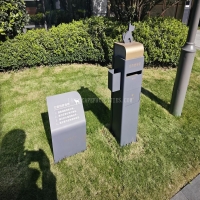Welcome to the website for landscape facilities products and knowledge.
How does the bin’s design accommodate users with visual impairments or other disabilities?
Modern bin designs are increasingly incorporating features to accommodate users with visual impairments or other disabilities, ensuring inclusivity in waste management. Key adaptations include:
1. Tactile Markings: Raised symbols, Braille labels, or textured surfaces help users identify recycling vs. general waste bins by touch.
2. High-Contrast Colors: Bold color contrasts (e.g., black lids on yellow bins) improve visibility for those with low vision.
3. Audio Feedback: Some smart bins emit sounds when opened or full, aiding navigation for visually impaired users.
4. Ergonomic Openings: Hands-free mechanisms (foot pedals or motion sensors) assist users with mobility challenges.
5. Consistent Placement: Standardized bin locations in public spaces reduce confusion for all users.
These innovations align with universal design principles, promoting independence and ease of use. Future advancements may integrate AI-guided voice assistance or sensor-based sorting to further enhance accessibility. By prioritizing inclusive design, manufacturers and urban planners can create equitable waste disposal systems for diverse communities.
Related search:

Recommendation
Outdoor cat and dog feces trash can; Community pet trash can; Metal multi-color design